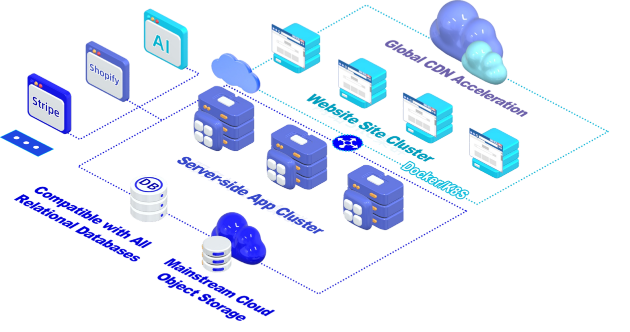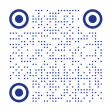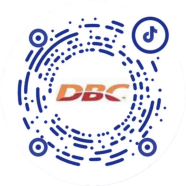 Mon-Fri, 9:00-17:00 (Beijing Time, UTC+8)
Mon-Fri, 9:00-17:00 (Beijing Time, UTC+8)Frontier Insights
We are dedicated to advancing the technology industry and sharing expertise in technical, business, and cultural domains.
We are dedicated to advancing the technology industry and sharing expertise in technical, business, and cultural domains.
The Integration of PIM and DAM: A Case Study of the Bravo Marketing Suite (BMS)
In the era of digital marketing, businesses face vast amounts of data and complex management challenges. Product Information Management (PIM) and Digital Asset Management (DAM) have become crucial tools for efficient operations and enhanced marketing effectiveness. The Bravo Marketing Suite (BMS) innovatively natively integrates content and experience management with digital asset management within a single architecture, offering businesses a new management model and a competitive edge.
I. What is PIM?
Product Information Management (PIM) is a specialized software tool designed for the centralized storage, management, and distribution of product-related information.
In daily business operations, product information encompasses various aspects such as product names, descriptions, specifications, prices, and images. A PIM system consolidates this product information, which is often scattered across different departments and systems, into a single, accurate source of truth. Through a PIM system, businesses can easily create, edit, update, and maintain product information, ensuring consistency and accuracy across all sales channels (such as online stores, physical retail locations, and partner platforms), thereby improving customer experience and sales efficiency.
II. When are PIM, DAM, or Both Needed?
1.Scenarios Requiring PIM
A PIM system becomes essential when a business has a wide variety of products, requires frequent updates to product information, and needs to display this information consistently across multiple sales channels. For example, a large electronics retailer selling products like mobile phones, computers, and home appliances, each with different models, configurations, and features, would benefit greatly. A PIM system allows for quick and accurate management of this complex information, such as timely updates to prices and stock levels, preventing customer loss and sales confusion due to inconsistent information.
2.Scenarios Requiring DAM
A Digital Asset Management (DAM) system is indispensable for businesses that possess large volumes of digital assets (like images, videos, audio files, documents). Advertising agencies, media companies, and large brands routinely generate and accumulate massive amounts of creative materials and marketing collateral. A DAM system enables the organized storage, efficient retrieval, and seamless sharing of these digital assets, boosting utilization rates and reducing time spent on recreating or searching for assets.
3.Scenarios Requiring Both
In the comprehensive push for digital marketing, many businesses find that relying solely on either PIM or DAM is insufficient for their complex needs. When product information needs to be enriched with digital assets (like high-quality product images, detailed video demonstrations) for effective presentation and promotion, PIM and DAM must work together. For instance, a fashion brand launching a new clothing line needs the PIM system to manage item details (style, size, color, price) and the DAM system to manage associated high-resolution images of models wearing the clothes, promotional videos, etc., enabling a cohesive omnichannel marketing campaign across its website, social media, and physical stores.
III. How Do PIM and DAM Work Together? – A BMS Case Study
The Bravo Marketing Suite (BMS) pioneers the native integration of content and experience management with digital asset management within a unified architecture. Within BMS, the PIM module is responsible for centrally managing core product information, including basic attributes, specifications, and sales data. The DAM module focuses on managing product-related digital assets, such as product images, videos, and 3D models.
When creating a new product page or marketing campaign, staff can use the unified BMS interface to effortlessly pull detailed product information from the PIM module while simultaneously selecting appropriate digital assets from the DAM module for integrated presentation. For example, when creating a webpage for a new air compressor, staff can directly retrieve its model, configuration, and price from BMS's PIM, then select stored assets like product images and functional demonstration videos from the DAM, quickly generating a content-rich, visually compelling product page. This natively integrated architecture not only enables seamless connection between product information and digital assets but also significantly boostswork efficiency, reducing the tedious process of data transfer and consolidation between disparate systems.
Furthermore, BMS features intelligent association capabilities, automatically recommending suitable digital assets based on product characteristics. For instance, when adding a mobile phone renowned for its camera features, the system can automatically recommend images and videos from the DAM that highlight the phone's photographic capabilities, helping the business better showcase the product's strengths.
IV. Benefits of Integrating PIM and DAM
1.Improved Data Accuracy and Consistency
Integrating PIM and DAM ensures consistency between product information and related digital assets. Whether on the corporate website, e-commerce platforms, or offline promotional materials, consumers encounter uniform product information and presentation, avoiding trust issues caused by discrepancies and enhancing brand image.
2.Enhanced Marketing Efficiency
Within BMS's integrated architecture, staff can quickly access the required product information and digital assets without switching between multiple systems. This drastically shortens campaign preparation time, allowing businesses to respond faster to market changes, launch new products and campaigns, and seize market opportunities.
3.Optimized Customer Experience
Rich, accurate product information coupled with high-quality digital asset presentation provides customers with a more intuitive and comprehensive understanding of the product. When browsing product pages or promotional materials, customers can better grasp product features and advantages, thereby increasing purchase intent and customer satisfaction.
3.Reduced Management Costs
The integration of PIM and DAM reduces the costs associated with data synchronization and maintenance between separate systems, as well as employee training costs. Businesses need not train staff on multiple independent systems, improving the efficiency of human resource utilization.
V. Conclusion
In the wave of digital marketing, the importance of Product Information Management (PIM) and Digital Asset Management (DAM) for businesses is increasingly prominent. The Bravo Marketing Suite (BMS), with its native integration of content/experience management and DAM, provides businesses with an efficient and convenient management platform. Through the synergistic work of PIM and DAM, businesses can improve data accuracy and consistency, enhance marketing efficiency, optimize customer experience, and reduce management costs. For enterprises pursuing digital transformation and seeking to enhance market competitiveness, an integrated solution like BMS is undoubtedly a choice worth considering. It will empower businesses to stand out in a complex and volatile market environment and achieve sustainable development.
Still hesitant about integrating PIM and DAM for your business? Contact us! We will help you customize a BMS platform tailored to your digital marketing needs.
FAQ
Q1: Can BMS support multi-language versions of product content when managing product information and digital assets?
A1: Yes. BMS's integrated architecture supports multi-language requirements. You can maintain multi-language product information in PIM and store corresponding language-specific digital assets in DAM, meeting international or multi-regional promotion needs.
Q2: For SMEs with a limited number of products, is the integrated PIM+DAM functionality in BMS too complex?
A2: No. BMS supports lightweight usage. SMEs can activate core functions as needed without complex configuration, effectively managing existing product information and assets while allowing for functional scalability as the business grows.
Q3: If an employee accidentally deletes product information or a digital asset in BMS, can it be recovered?
A3: Yes. BMS includes asset backup and version history features. In case of accidental deletion or incorrect modifications, historical versions can be located via system logs, allowing for quick recovery of critical information and assets.
Q4: Can the DAM module in BMS set different usage permissions for assets for different departments?
A4: Yes. BMS supports setting permissions based on departments and roles. For example, the marketing department might have edit rights, while the sales department might only have view and use permissions, preventing asset misuse or leakage.
Q5: Can the PIM module in BMS integrate with our company's inventory management system?
A5: Yes. BMS supports integration with external systems. The PIM module can connect with inventory management systems, allowing inventory changes to be automatically reflected in the product information, preventing the display of outdated stock status.

Want to know more about our products?
With years serving Fortune 500 clients, we offer flexible solutions and integrated implementation.
Want to know more about our products?



Xiaohongshu

WeChat Channels

Douyin


Xiaohongshu

WeChat Channels

Douyin
To enhance your browsing experience, analyze website traffic, and optimize our services, we use cookies. By continuing to browse this website, you agree to our use of cookies. For more information, please read our Privacy Policy and Terms of Use.
To enhance your browsing experience, analyze website traffic, and optimize our services, we use cookies. By continuing to browse this website, you agree to our use of cookies. For more information, please read our Privacy Policy and Terms of Use.
